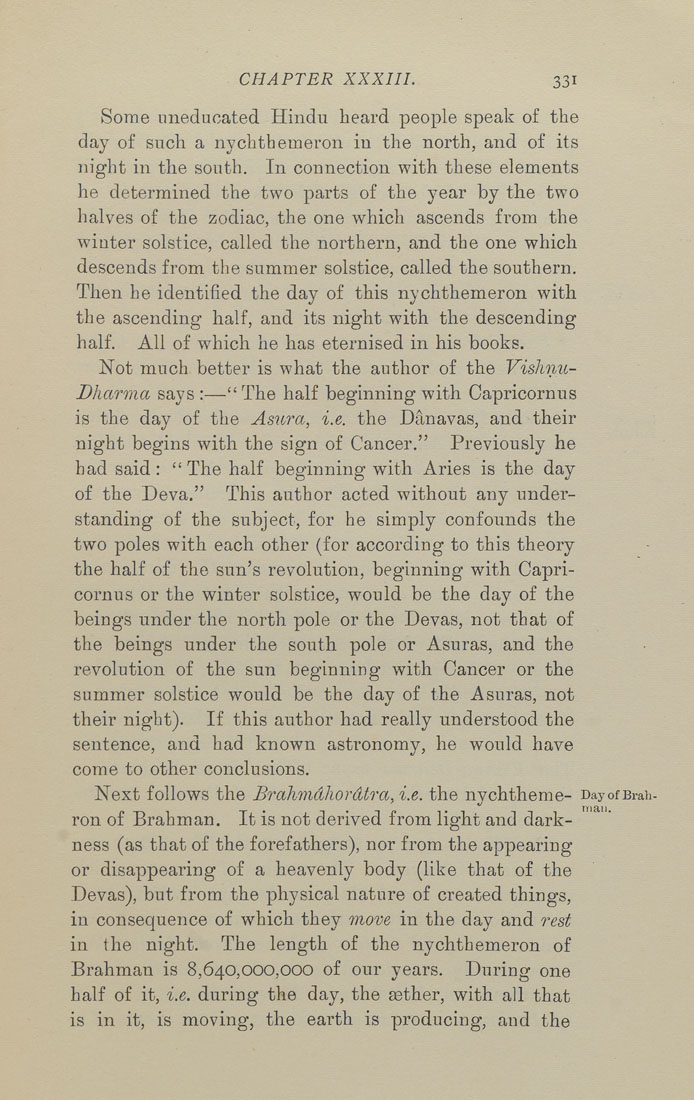Bīrūnī, Muḥammad ibn Aḥmad, Alberuni's India (v. 1)
(London : Kegan Paul, Trench, Trübner & Co., 1910.)
|
||
|
|
|
|
| Page 331 |

CHAPTER XXXIII. 331 Some uneducated Hindu heard people speak of the day of such a nychthemeron in the north, and of its night in the south. In connection with these elements he determined the two parts of the year by the two halves of the zodiac, the one which ascends from the winter solstice, called the northern, and the one which descends from the summer solstice, called the southern. Then he identified the day of this nychthemeron with the ascending half, and its night with the descending half. All of which he has eternised in his books. Not much better is what the author of the Vishnu- Dharma says :—"The half beginning with Capricornus is the day of the Asura, i.e. the Danavas, and their night begins with the sign of Cancer." Previously he had said: "The half beginning with Aries is the day of the Deva." This author acted without any under¬ standing of the subject, for he simply confounds the two poles with each other (for according to this theory the half of the sun's revolution, beginning with Capri¬ cornus or the winter solstice, would be the day of the beings under the north pole or the Devas, not that of the beings under the south pole or Asuras, and the revolution of the sun beginning with Cancer or the summer solstice would be the day of the Asuras, not their night). If this author had really understood the sentence, and had known astronomy, he would have come to other conclusions. Next follows the Brahmdliordtra, i.e. the nychtheme- DayofBrah- ron of Brahman, It is not derived from light and dark¬ ness (as that of the forefathers), nor from the appearing or disappearing of a heavenly body (like that of the Devas), but from the physical nature of created things, in consequence of which they 7nove in the day and rest in the night. The length of the nychthemeron of Brahman is 8,640,000,000 of our years. During one half of it, i.e. during the day, the tether, with all that is in it, is moving, the earth is producing, and the man |
| Page 331 |







